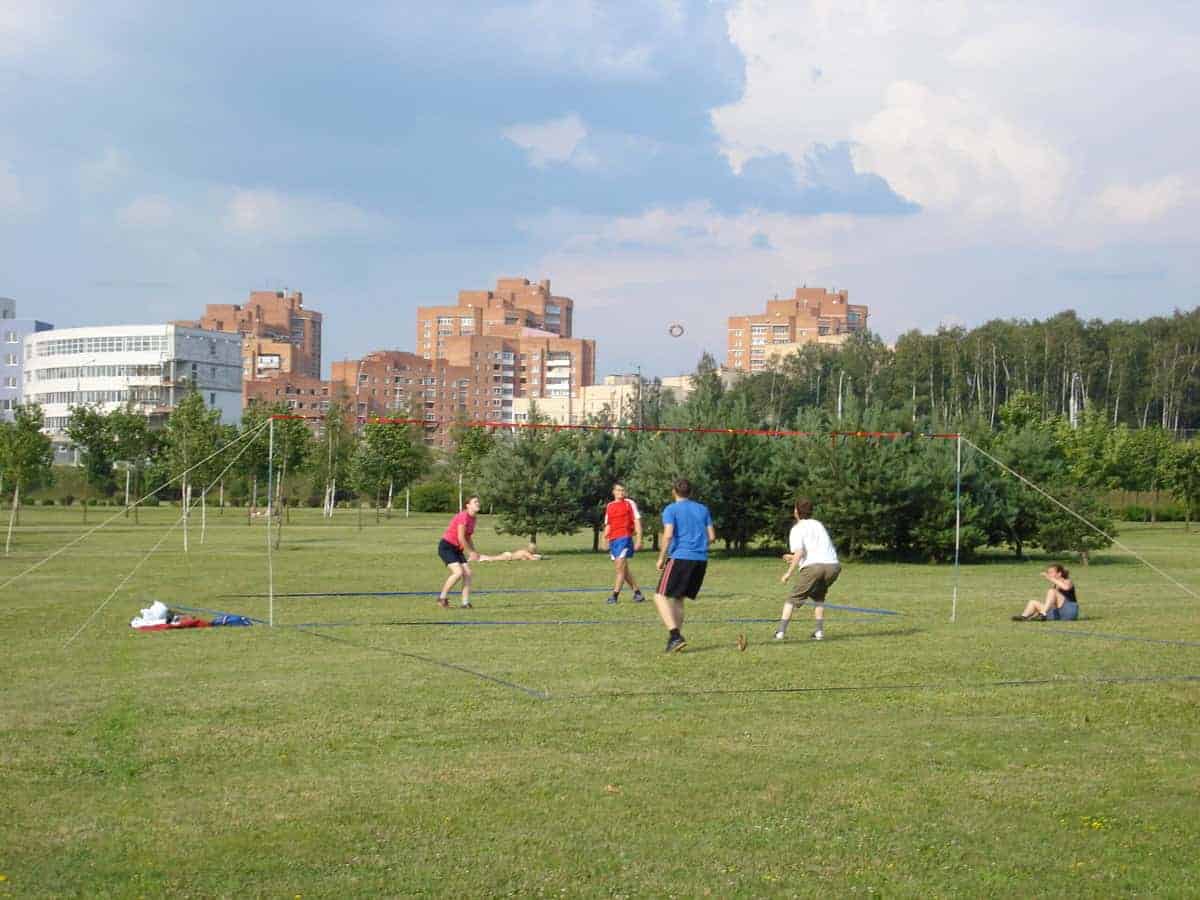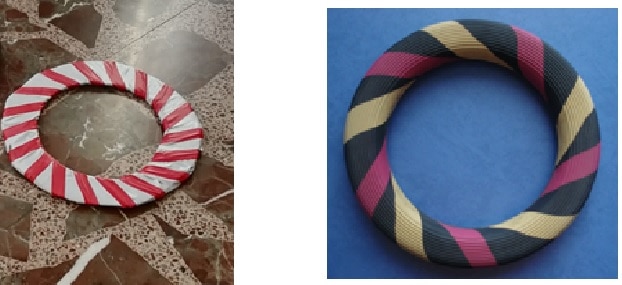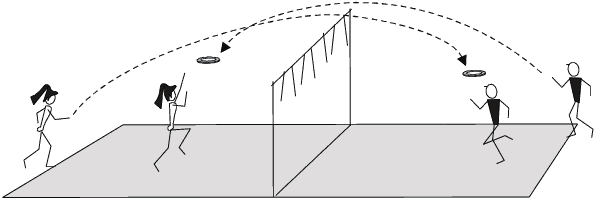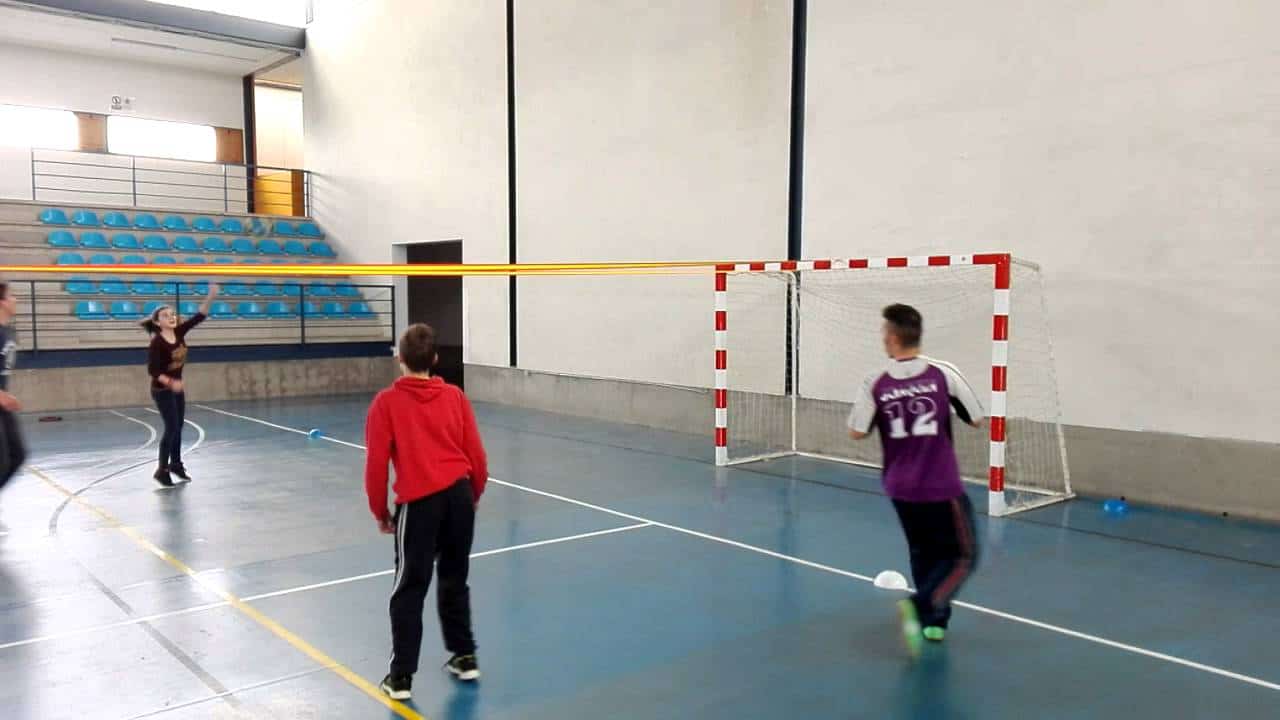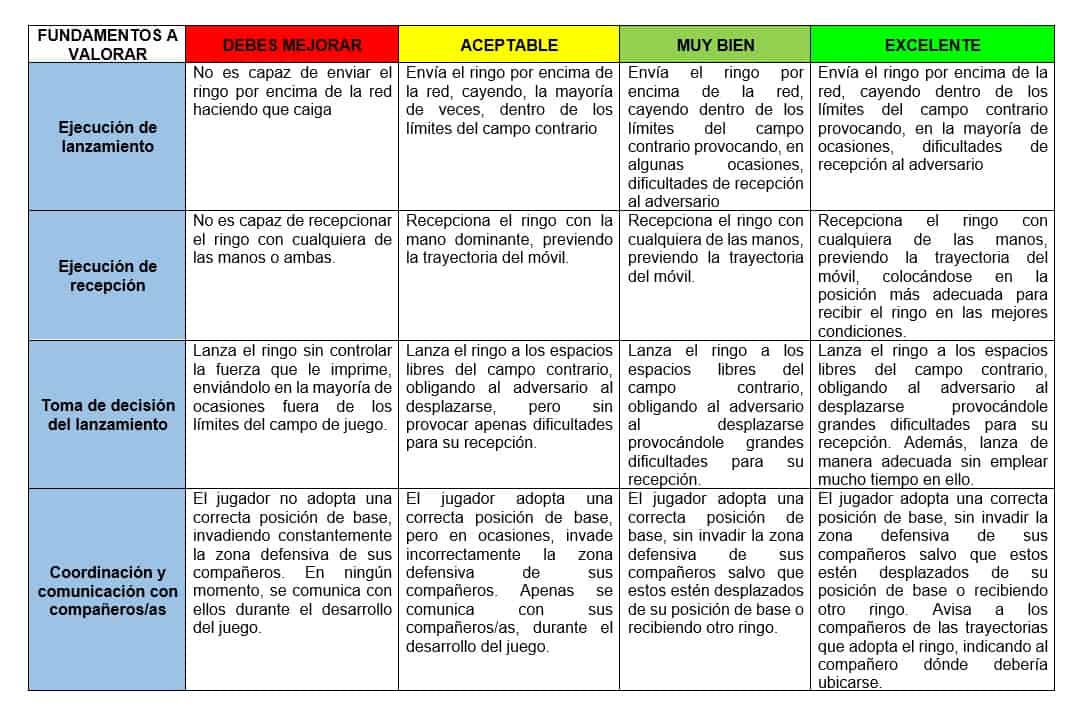The aim of this article is to present the basic characteristics of the alternative sport “Ringo in Physical Education”.
What is Ringo?
Ringo, also known as Polish ringo, is a divided court sport practiced both individually and in teams, which involves throwing a rubber ring over a rope located approximately at the height of a volleyball net (1).
Origin of Ringo in Physical Education
It was created in Warsaw (Poland) in 1959 by Wodzimierz Strzyewski, captain of the Polish fencing team, with the intention of finding alternatives to regular physical training and to avoid the adverse weather conditions in Poland during winter.
Therefore, he created a game to stay fit and at the same time promote the development of physical skills and abilities, such as agility, coordination, and speed, which are of vital importance in fencing (4).
What is needed to play Ringo in Physical Education?
To play ringo, we only need a ring, which can be the official one or a homemade one.
The official ring is made of rubber and has an external diameter of 17 cm and weighs 160-165 gr. It is stable in flight and does not cause injuries to the fingers (2).
Regarding the playing field, as seen in the image, it is identical to that of volleyball, with the same dimensions of 18 meters long by 9 meters wide (2).
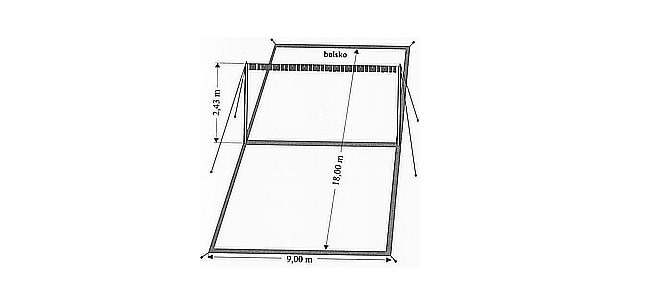
10 basic rules to start playing ringo in physical education
To start playing ringo, it is not necessary to know a large number of rules, so here are some of the main ones for its implementation (1,2,5):
- The main objective of the game is to score 15 points (with a 2-point difference up to a maximum of 17), trying to send the ring to the opponent’s field over the net, causing difficulties in reception and return for the opponents, while defending one’s own field.
- Field dimensions. The net (a rope, tape, or volleyball net) must be at least 1 cm wide. Team matches are played in a rectangular space with dimensions of 9×18 m (similar to volleyball courts) and the net at a height of 2.43 m. The central line called peace limit must not be crossed either on the ground or in the air.
- The serve is performed at the referee’s signal, behind the baseline and within the side lines. If playing with only 1 ring, the service possession changes every 3 points; in a game with two rings, every 5 points. When playing with two rings, a fault in the throw of one of the two causes the loss of 1 point. However, the ring that fell to the ground must remain there until the game with the other ring ends.
- Ring trajectory. The ring must fly more or less parallel to the ground or with the circumference facing the opponent’s half of the court. Although the ringo may wobble during its flight, it can never adopt a vertical position. Additionally, if the ring does not spin in either direction or if it touches the net and then falls outside the playing field, the thrower loses 1 point.
- Ring throw. The thrower must have at least one foot in contact with the ground (failing to do so results in the loss of 1 point). It must be thrown from the place where it was caught or after performing the allowed stop step when one of the feet touches the ground.
- Ring reception. The ring can be caught with any hand, even with a single finger, but with the condition that it is returned with the same hand. Similarly, if a ring slips from the hand on the first attempt, it can be caught with the same hand before it falls to the ground. Two teammates can catch the ring simultaneously, but only one of them can return it. However, it is not allowed to catch both rings at the same time with the same hand.
- Ring possession time. Before the start of the competition, the maximum ring possession time will be determined (usually between 5″ or 3″). Thus, if a player deliberately delays returning, the referee can declare possession and start counting aloud. If the player does not release the ring in that time, they lose a point.
- Field change. To provide equal opportunities and considering factors such as light or wind, players must change fields after one side reaches 8 points (8+1, with two rings).
- Contact with the ring. The ring held in the hand must not touch the player’s body or their teammates, nor the ground, the net, or the area beneath it. The receiving player can change the grip of the ringo as long as it touches the hand.
- Positions on the field. Players can adopt any position on their playing field. Each player throws the ring directly without passing it to a teammate. The ring can also be caught and thrown from outside the playing area.
Activity proposals ringo in physical education
Once the basic rules in ringo in physical education are established, the implementation of activities for the development of ringo is relatively simple. Many and diverse activities can be proposed, here are some:
- The work on technical fundamentals is based on the basic motor skills of throwing and catching, so it can start by grouping students in pairs and then gradually increasing the number of participants. This technical work can be carried out in a playful way through tag games, relays, where the ringo is the main element.
- At a tactical level, it is very important to work on effective space occupation, efficient movements, as well as finding free spaces to create difficulties in the reception of the ringo by the opponents. Therefore, games like 10 passes, the tower, reduced situations of 1×1, 2×2 can be carried out, varying the height of the net or the structure of the playing field (if we want to work on forward-backward movement, propose elongated but narrow fields, and if we want to work on lateral movements, it would be the opposite, wide but short fields).
- Use pedagogical models for its development, such as comprehensive teaching, sports education, self-construction of materials, personal and social responsibility model, among others. In the book “Learning to Teach Sport” by the publisher, there is a proposal for ringo through the sports education model (3).
Evaluation of Ringo in Physical Education
Ringo is a sport that allows us to evaluate many aspects in our Physical Education classes, therefore, different instruments can be used for this, such as checklists, evaluation rubrics, qualitative scales, self-assessment targets, etc.
Below is a proposal for an evaluation rubric.
To learn more about Ringo in physical education, I recommend watching the following video made by Antonio Méndez Giménez.
Conclusion
Ringo in physical education is an alternative sport that allows for the proposal of varied activities, to make modifications and adaptations easily, to include pedagogical models in the structure of our teaching units, leading to a comprehensive education of students.
Moreover, students feel involved in this sport, as its material can be self-constructed, both the ring and the ringo net, so hardly any economic resources are needed for its practice and it is adaptable to any space and playing field.
I consider it a sport with great acceptance in Physical Education classes, as it avoids physical contact between players due to being a divided court sport, and it is not necessary to have an implement, making it easy to familiarize with its main element, the ringo ring.
Bibliography
- Méndez-Giménez, A. (2011). Didactic Unit on Ringo with self-constructed material. Combining the Models of Sports Education, Tactical and Cooperative. In A. Méndez (coord.), Current models of sports initiation: didactic units on divided court games and sports (pp. 95-124). Seville: Wanceulen.
- Website of the International Ringo Federation: http://irf.ringo.org.pl/ Retrieved on 11/10/2022.
- García, L. M. and Gutiérrez, D. (2017). Learning to teach sport. Comprehensive teaching models and sports education. Barcelona: Inde.
- Del Valle, P., & Fernandez-Río, J. (2016). Cooperative Learning and Sports Education: hybridization through the sport of Ringo. X International Congress of cooperative physical activities. Barcelona.
- Méndez Giménez, A. (2005). A quality sports initiation with self-constructed materials. The example of ringo within a comprehensive-structural model. Tándem. Didactics of Physical Education, 18, 61-69.
